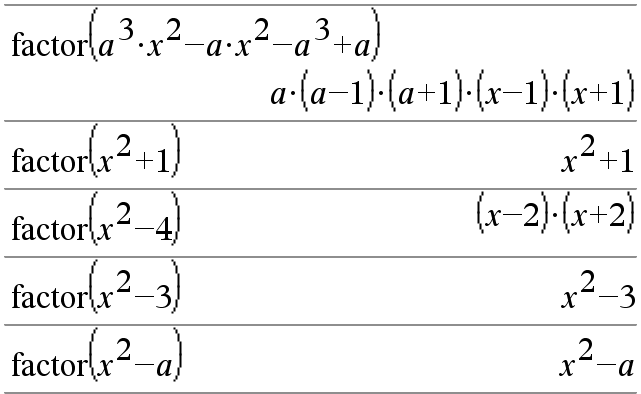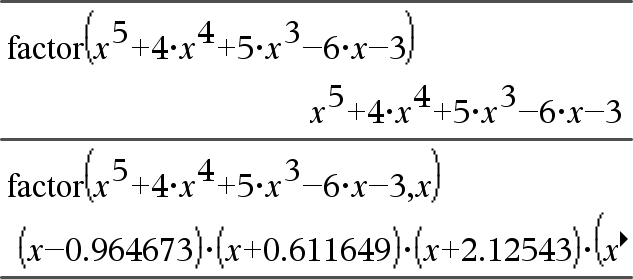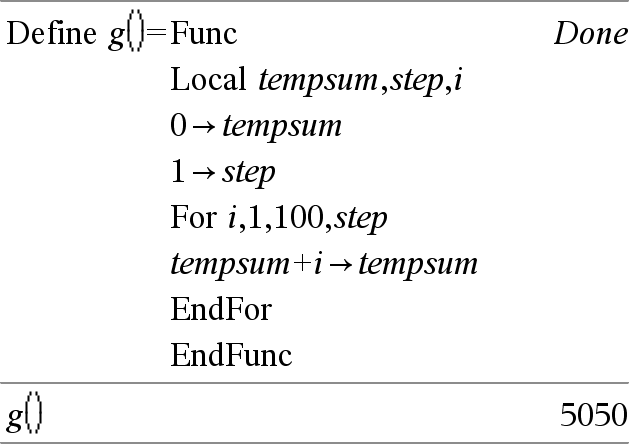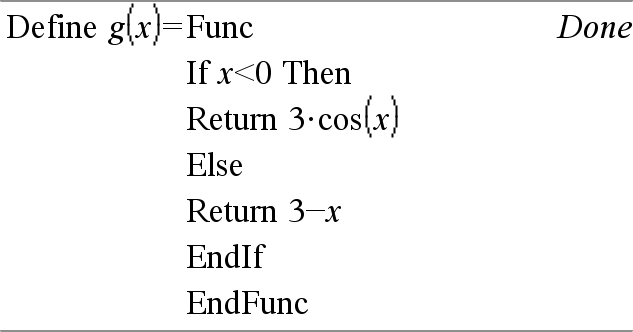Catalog > 
factor(Expr1[, Var]) ⇒ expression
factor(List1[,Var]) ⇒ list
factor(Matrix1[,Var]) ⇒ matrix
factor(Expr1) returns Expr1 factored with respect to all of its variables over a common denominator.
Expr1 is factored as much as possible toward linear rational factors without introducing new non-real subexpressions. This alternative is appropriate if you want factorization with respect to more than one variable.

factor(Expr1,Var) returns Expr1 factored with respect to variable Var.
Expr1 is factored as much as possible toward real factors that are linear in Var, even if it introduces irrational constants or subexpressions that are irrational in other variables.
The factors and their terms are sorted with Var as the main variable. Similar powers of Var are collected in each factor. Include Var if factorization is needed with respect to only that variable and you are willing to accept irrational expressions in any other variables to increase factorization with respect to Var. There might be some incidental factoring with respect to other variables.

For the Auto setting of the Auto or Approximate mode, including Var permits approximation with floating-point coefficients where irrational coefficients cannot be explicitly expressed concisely in terms of the built-in functions. Even when there is only one variable, including Var might yield more complete factorization.
Note: See also comDenom() for a fast way to achieve partial factoring when factor() is not fast enough or if it exhausts memory.
Note: See also cFactor() for factoring all the way to complex coefficients in pursuit of linear factors.

factor(rationalNumber) returns the rational number factored into primes. For composite numbers, the computing time grows exponentially with the number of digits in the second-largest factor. For example, factoring a 30-digit integer could take more than a day, and factoring a 100-digit number could take more than a century.
To stop a calculation manually,
| • | Handheld: Hold down the c key and press · repeatedly. |
| • | Windows®: Hold down the F12 key and press Enter repeatedly. |
| • | Macintosh®: Hold down the F5 key and press Enter repeatedly. |
| • | iPad®: The app displays a prompt. You can continue waiting or cancel. |
If you merely want to determine if a number is prime, use isPrime() instead. It is much faster, particularly if rationalNumber is not prime and if the second-largest factor has more than five digits.














